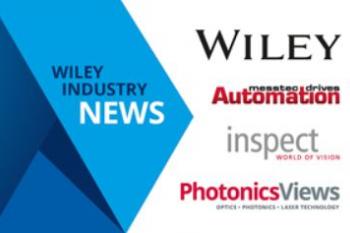Do I Really Need Machine Vision?
11.02.2025 - Selecting Vision Systems for Cobot-Based Quality Applications
Integrating vision systems with cobots can boost quality and inspection tasks. Basic 2D cameras handle simple tasks, while advanced vision systems are needed for complex precision work. Users have to consider the necessity of vision, application type, lighting, 2D vs. 3D cameras, precision, and cycle time. Radio frequency-based systems offer an alternative for some tasks.
Integrating vision with your collaborative robots (or ‘cobots’) can improve quality and inspection processes, but it’s not a one-size-fits-all process. For example, detecting whether a product has a sticker indicating that it has passed inspection, is the type of simple application that can be performed effectively by low cost, basic, 2D camera-based systems. Meanwhile, a cobot working on printed circuit boards (PCBs) on an electronics assembly line might use machine vision to perform tasks with demanding precision requirements, such as inspecting the quality of solder joints post-assembly or locating the position of components on a PCB.
The wide range of vision solutions for cobots can make the process daunting, so consider the following questions before you talk to your integrator:
1) Do I really need machine vision?
Simple sorting and detection applications can often be carried out using traditional sensors and fixtures. Similarly, palletizing wizards for cobots make it easy to program a cobot to pick up items placed in a grid pattern on a peg board.
Applications that almost always require vision include quality inspection tasks and safety.
2) What application am I looking at?
Vision-based applications fall into three main categories: location (with path planning), inspection, and safety. In part location applications, object recognition and pose estimation capabilities are required. In quality inspection tasks, when the detection of minute artifacts is required, you’ll need high-res cameras with advanced image processing. Safety applications require real-time processing capabilities, tracking functionality, and robust object detection.
3) What are my lighting requirements?
Some vision systems need consistent, high-contrast lighting conditions to perform effectively. Others provide their own scene illumination. Similarly, some vision systems cope with variable lighting conditions better than others. Ask your integrator whether changes in ambient light levels over the course of a day will impact application performance.
4) Do I need a 2D or 3D camera?
2D robotic vision excels at non-complex barcode reading, label orientation and printing verification applications. 2D cameras can only provide length and width information – not depth – limiting the range and number of applications they can perform.
3D cameras are designed for applications requiring detailed information regarding an object’s precise location, size, depth, rotational and surface angles, volume, degrees of flatness, and more. Inspection applications requiring minute surface defect detection require 3D camera systems.
5) What are my application’s precision requirements?
Microchip manufacturing and precision assembly call for advanced vision systems with high-res cameras and advanced image processing. Vision applications with lenient tolerances can be performed by low-cost vision systems, but talk to your integrator about your application’s accuracy, repeatability, and tolerance requirements.
6) What is the cycle time?
High-speed applications that require fast image capture and processing can take time to process the data. Factor this into your cycle time considerations.
A radio frequency-based alternative to vision
High precision microlocation and sub-milimeter precise real-time path planning path planning for cobots doesn’t always require vision. One system, developed by Humatics, uses radio frequencies instead of light and it outperforms vision-based alternatives on some tasks, explains Ron Ranaldi, Vice President of Sales, Marketing and Business Development, Humatics: “The ability to process data in complex environments, such as an engine in motion, is well suited to the lightweight, highly rapid positional data that radio frequency provides. It’s very difficult to achieve the same performance with machine vision because of the image processing required,” he explains.
Author
Mike DeGrace, UR+ ecosystem manager at Universal Robots







